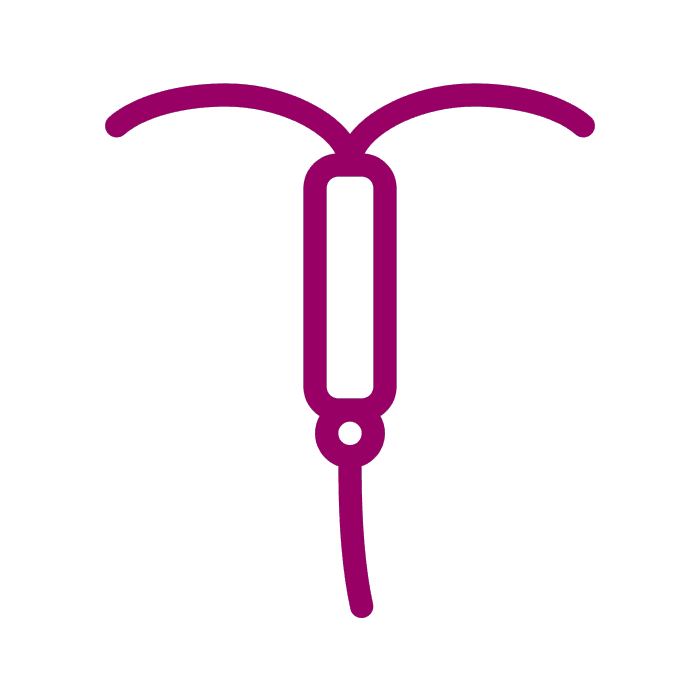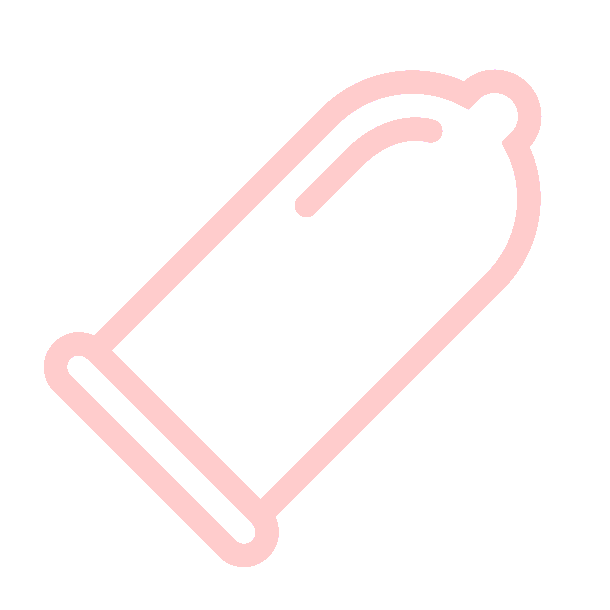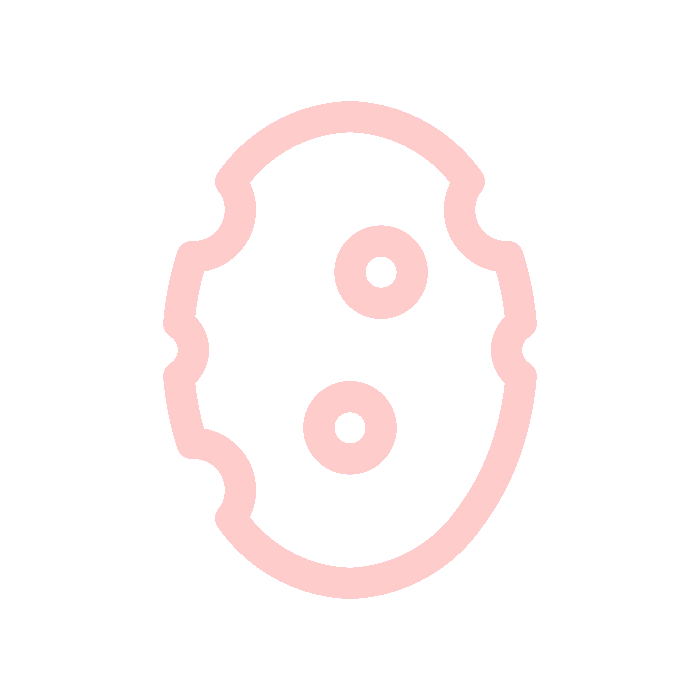
DIAPHRAGM
Barrier Method
A Diaphragm is a small dome that blocks the entrance to the cervix to stop sperm from entering the womb.
88 % Effective
Details
The diaphragm is a circular dome made of thin, soft silicone that’s inserted into the vagina before sex. The rim has a flexible spring that keeps it in place. It covers the cervix, preventing sperm from getting into the uterus to fertilise an egg. It needs to be used with a spermicide (a gel that kills sperm). As diaphragms come in different sizes, your diaphragm will need to be fitted by a healthcare provider, who will also show you how to put it in.
A diaphragm only needs to be used when you have sex but must be left in for at least 6 hours after the last time you had sex.
When used correctly with a spermicide every time you have sex, it is approximately 94% effective in preventing pregnancy.
How to
You need to insert the diaphragm before you have sex. With clean hands, start by spreading spermicide in the diaphragm and along the rim. Squeeze the diaphragm in half and insert it in the vagina as you would a tampon, making sure that it covers your cervix. If you have sex more than once, make sure that the diaphragm is still in place and insert more spermicide. You must leave your diaphragm in for at least 6 hours after the last time you had sex.
After using it, rinse your diaphragm thoroughly with warm water and mild unperfumed soap. Always check it for any signs of damage before using it.
Cons
It is not as effective as other types of contraception
It must be used with spermicide every time you have sex
It does not protect you from sexually transmitted infections
It needs to be fitted by a trained healthcare provider
It requires practice to insert it correctly
Some women may develop bladder infections when using the diaphragm
Pros
It can be inserted before sex
Does not contain hormones
Is not affected by other medications
Side Effects
Some people may experience irritation in or around the vagina or penis
Frequently Asked Questions
-
A contraceptive diaphragm or cap is a circular dome of thin, soft silicone inserted into the vagina before sex.
It covers the cervix so sperm cannot get into the womb (uterus) to fertilise an egg.
-
For fitting contraceptive diaphragms or caps, pelvic examination by a physician or a skilled healthcare provider is necessary. Diaphragm Manufacturers produce fitting rings and different rim types in various sizes. Sizes range from 50 to 105 mm. They are most commonly available in flat spring or coil spring rim types. Diaphragms between 60 -85 mm in diameter will provide the correct fit for most women. A clinical assessment of the vaginal length approximates the fitting ring size. To find the perfect diaphragm the clinician tests a range of sizes. Each diaphragm is fitted with the correct rim to suit the woman as rim type can affect the fit and ease of insertion. It should fit snugly into the upper half of the vagina. The user should practice insertion under supervision. Placement is assessed to ensure that the fitting ring is correctly positioned in the vagina. Fitting is done when the bladder is not empty so the user can test to ensure ease of urination with the fitting ring. The diaphragm may require resizing following a full-term pregnancy, pelvic surgery, or abortion, or if there is a significant weight change.
-
You can insert the diaphragm up to 6 hours before intercourse. Some people do find that this might interfere with spontaneity.
-
A diaphragm should be removed no sooner than 6 hours after intercourse and can remain in place for up to 24 hours after intercourse. Additional spermicide should be applied before more intercourse. If more spermicide is required it should be placed in the vagina and the diaphragm should be left in place.
-
Spermicides contain substances that kill sperm. Some products also form a thick foam or mucus which blocks the cervix and acts as a barrier against the sperm. They can come in the form of foam, foaming tablets, pessaries, creams, jellies and sponges. Spermicides are not effective enough when used alone, and should be used in combination with barrier methods such as the diaphragm or cap.
-
Most spermicides have an unpleasant taste but will not usually harm you or make you feel ill. However, it is advisable to avoid swallowing excessive amounts. If you have ingested spermicide and feel unwell, you should seek the advice of a healthcare provider.















CONTRACEPTIVE METHODS
CONTRACEPTIVE METHODS
-

CONTRACEPTIVE IMPLANT
1 or 2 small hormone-releasing silicone rods placed under the skin by a healthcare provider.
-

CONTRACEPTIVE INJECTION
The contraceptive injection is a shot of hormones that lasts for 1 up to 3 months.
-

CONTRACEPTIVE PATCH
A patch that sticks to the skin and releases hormones that are highly effective at stopping pregnancy.
-

CONTRACEPTIVE RING
A flexible plastic ring that is placed in the vagina by the woman and constantly releases hormones.
-

EMERGENCY CONTRACEPTIVES
Emergency contraceptives are hormone-based pills that are used in the event of accidental unprotected sex.
-

FEMALE CONDOM
A female condom is a sheath that is placed inside a woman’s vagina before sexual intercourse.
-

FERTILITY AWARENESS
Fertility awareness is the method of only having sex on the non-fertile days of your menstrual cycle.
-

INTRAUTERINE DEVICE
An IUD is a small, flexible, often T-shaped device wrapped in copper that is placed inside your womb by your healthcare provider.
-

INTRAUTERINE SYSTEM-IUS
An IUS is a small, flexible, T-shaped system that releases low levels of hormones and is placed inside the womb by your healthcare provider.
-

MALE CONDOM
A condom is a thin film sheath that is placed over a man’s erect penis before having sex.
-

PULL-OUT METHOD
Pulling out (also called Withdrawal Method) requires no additional hormones or devices, just impeccable timing and a lot of luck.
-

SPERMICIDES
Spermicides affect the way sperm travels in the womb making it hard for them to move freely and fertilize an egg.
-

SPONGE
A sponge blocks the entrance to the cervix and releases spermicide, both together stopping sperm from entering the womb and fertilizing an egg.
-

STERILISATION
Sterilisation is the process of completely taking away the body’s ability to reproduce through surgery or minimal invasion.
-

THE PILL
The pill is a small tablet containing hormones that must be swallowed every day, at the same time.



